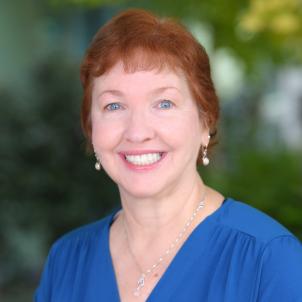
Keep Your Child Safe from Household Cleaners and Chemicals
Are your household hazards “kid-proofed?”

It might sound silly, but one of the first things pediatrician Colleen Kraft, MD, tells families to do once their child is around 6 months old is crawl around the floor of their home: “Pretend you're that 6-month-old. What looks interesting and dangerous to you? Because kids will beeline for that.”
From the bathroom or kitchen to the garage, many brightly colored cleaning products can cause serious injury or even death if swallowed. The more “sparkly” the household cleaner or label, the more attention it calls out to curious kids.
Simple things like closing the door to utility rooms and putting an affordable doorknob guard on the door could save you a trip to the emergency room. Here’s what you can do to reduce the risk of your child tampering with dangerous products at home.
Pay attention to labels.
If a cleaning product or chemical is harmful or you need to be careful using it, it will likely have one or more of these words on the label:
- Caution
- Danger
- Toxic
- Poison
- Warning
Know the risks of common household products.
“Some products can irritate if you get them in your eyes or on your face. But ingesting even a small amount of certain cleaners can cause either serious breathing or stomach problems, or burn the esophagus,” explains Dr. Kraft. “It's a lot riskier than what people even think about.”
Products and materials that are dangerous to children include:
- Laundry detergent, especially laundry pods
- Dishwashing detergent or dishwasher pods
- Spray cleaners, like multi-purpose spray or window cleaner
- Vape pens and liquid nicotine
- Alcohol
- Personal hygiene products and makeup
- Medications
- Household plants
- Batteries (especially coin or button batteries)
- Small items like beads, buttons, magnets, and coins
Dr. Kraft recommends parents also secure their trash can, as trash can be another way children come into contact with toxins.
Storing chemicals at home
When deciding where to store household chemicals, Dr. Kraft tells families that “high and locked” is best.
Store hazardous products in cabinets or drawers that close tightly and consider using child-proof locks. If you place your products in a linen or storage closet, make sure that they are placed on shelves up high enough that children can't reach them—even better if they’re out of sight.
Do’s and don’ts of keeping cleaning products and chemicals at home
DO keep a list of emergency telephone numbers. Many cleaning products and chemicals have instructions on what to do if the product is used incorrectly, resulting in emergency. Create and keep a first-aid kit that includes emergency-wash liquids.
In the first-aid kid, keep a list of telephone numbers for:
- National Poison Control, 800-222-1222
- The nearest hospital
- A local ambulance service
- Your family doctor
DO keep products in their original packaging, and labels intact. Labels contain important safety information. One of the biggest mistakes to make is to remove labels or allow them to get torn or damaged. This separates the label from the cleaner, and anyone can mistake clear or colored liquids as drinkable.
DO clean with windows open for ventilation. This will help ensure your child isn’t breathing in hazardous particles that may be in the air while you clean.
DON’T leave a bottle or container of cleaning supplies open and unattended. Always close and put away the cleaning supply if you are interrupted.
DON’T mix products. “You may have seen your grandma combining products when you were younger—but these are not the same chemicals we grew up with,” warns Dr. Kraft. Read labels carefully and take guidance seriously.
DON’T tell your child that medicine or toiletries taste/smell like candy. This may cause children to mistake certain items for candy and ingest them when unsupervised.
Talking to children about household chemical risks
Dr. Kraft recommends communicating the hazards of these chemicals to children around age 6 or 7—but still keeping products secured and out of the way.
“You can tell kids, ‘This is where we keep our cleaning stuff. We keep it locked because it's dangerous if you eat it or if it gets into your eyes,’” she says.
Dr. Kraft also stresses the importance of continuing to have these conversations with kids as they grow up, as certain social media trends may encourage them to ingest dangerous products.
Don’t be scared—just be prepared.
Many household products can be dangerous to children, but with a little preparation, there’s no need to fear. The next time you bring household cleaners and chemicals home, familiarize yourself with their labels and be aware of where your products are kept so you can help children stay safe.


